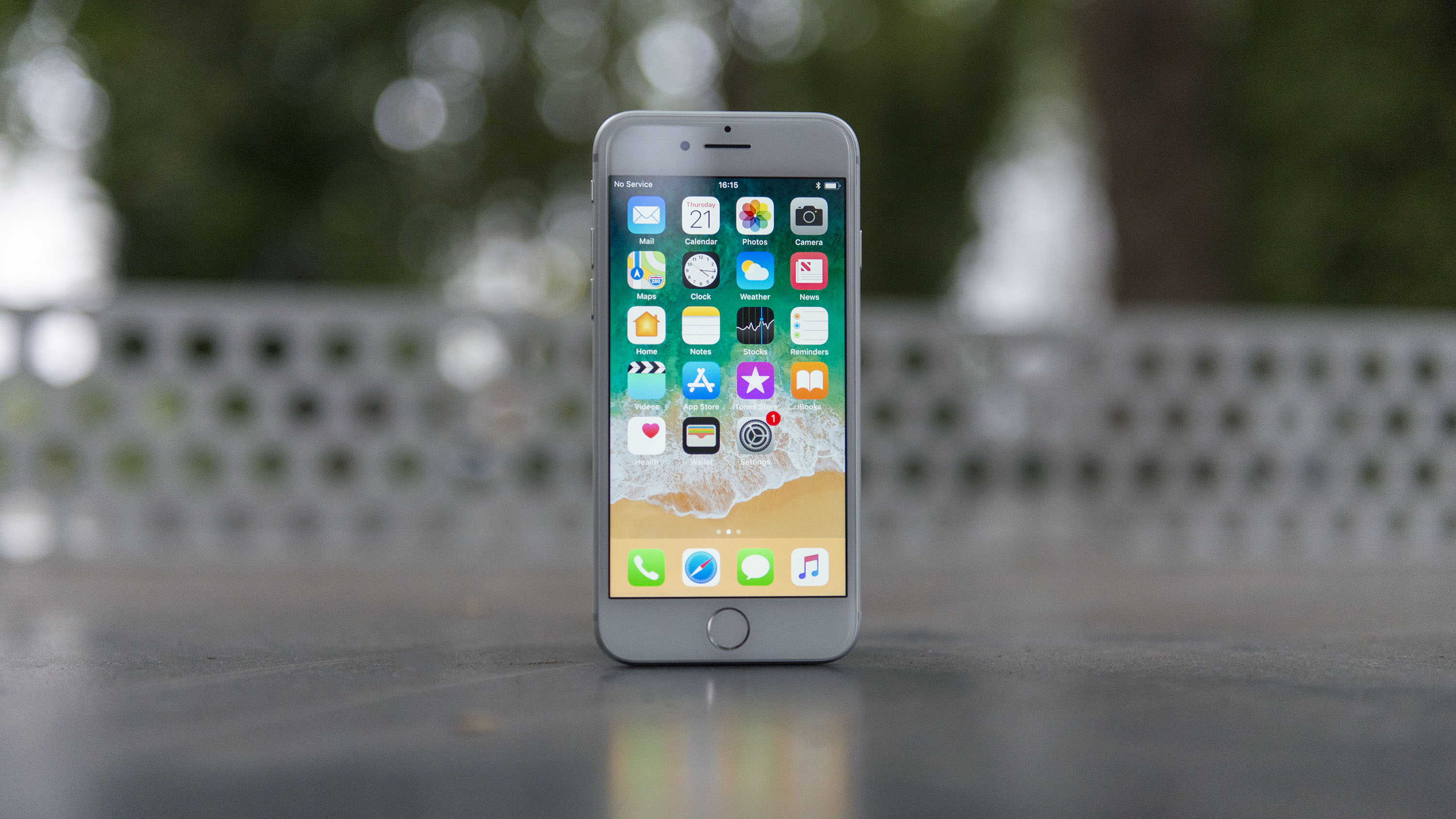TechRadar Verdict
Don’t let the iPhone 8 name fool you – this is very much the iPhone 7S, an incremental upgrade on the 4.7-inch iPhone 7 with a few additions here and there, but nothing to really wow you next to other smartphones in 2018.
Pros
- +
Wireless charging is useful
- +
Glass rear is pleasing in the hand
- +
Camera is great at point-and-shoot
Cons
- -
Limited upgrade over iPhone 7
- -
Bezel-heavy design looks dated
- -
Battery only just lasts a day
Why you can trust TechRadar
Apple's iPhone 8 wasn't even the top-of-the-line iOS phone when it came out, but it's still a robust choice for functionality and speed, with a traditional home button packing an easy-to-use Touch ID fingerprint sensor to boot. In short, it's as powerful as the iPhone X at a notably lower cost – which is still impressive years after both phones have come out.
If you're scouring for the best iPhone right now, consider Apple's newest iPhone 12 range, which includes four phones. They're three years newer than the iPhone 8, but a fair bit pricier to match. Thankfully, the price for the iPhone 8 has dropped since it launched.
When Apple announces new iPhones, it typically drops a few aging devices, but the iPhone 8 has manage to survive unscathed, and enjoys the new features in iOS 14 to boot. Apple still considers it a 'budget' entry to the iPhone series for people who want Apple's tech without paying for a high-end phone, though it's now more in line with the new mid-range iPhone SE 2020. That means it's still very easy to pick up the iPhone 8 from a variety of places at half (or more) off the price tag of the latest iPhone.
The 8 is a legacy iPhone through and through: if you've owned an Apple handset from the iPhone 6 onwards, you'll know exactly what you're getting with this smartphone. There haven't been too many changes over previous models, but for some, that's a bonus.
iPhone pessimists and Android fans (sometimes the same people) will be quick to point out the seemingly minor incremental upgrades over 2016's iPhone 7, but for those with an iPhone 6S or before, that's less of a problem – especially with the 8's more powerful chipset.
While it may not offer much over its direct predecessor, the iPhone 8 has enough about it to make it an exciting upgrade for those with older iPhone handsets. It also enjoys all the goodies in iOS 14, like widgets, Dark Mode and a range of app speed increases, so you can make the most of your iPhone experience.
Update: The iPhone 8 will be getting iOS 15. Apple confirmed as much while unveiling the software at WWDC 2021. The update will land later this year (probably in September) and it brings spatial audio to FaceTime, the ability for Android users to join FaceTime calls, new details for commercial districts and buildings in Apple Maps, a redesigned weather app, and lots more.
- Read our reviews: iPhone 8 Plus | iPhone 12 mini | iPhone 12 | iPhone 12 Pro | iPhone 12 Pro Max
iPhone 8 vs iPhone XS
Apple hasn't reinvented the wheel here – if you're craving innovation (within the iPhone bubble, at least) see the new iPhone XS (which has replaced the iPhone X).
You've probably already heard, but the differences between these two phones is pretty vast - and the first point is the cost. At launch, the iPhone XS started at $999 / £999 / AU$1,579 if you want the 64GB model, where the iPhone 8 now starts at $599 / £599 / AU$979 for the same capacity.
Those prices have gone down since, though the iPhone 8 isn't sold directly by Apple as it's been replaced in the lineup by the iPhone SE 2020, so the pricetag may vary by retailer.
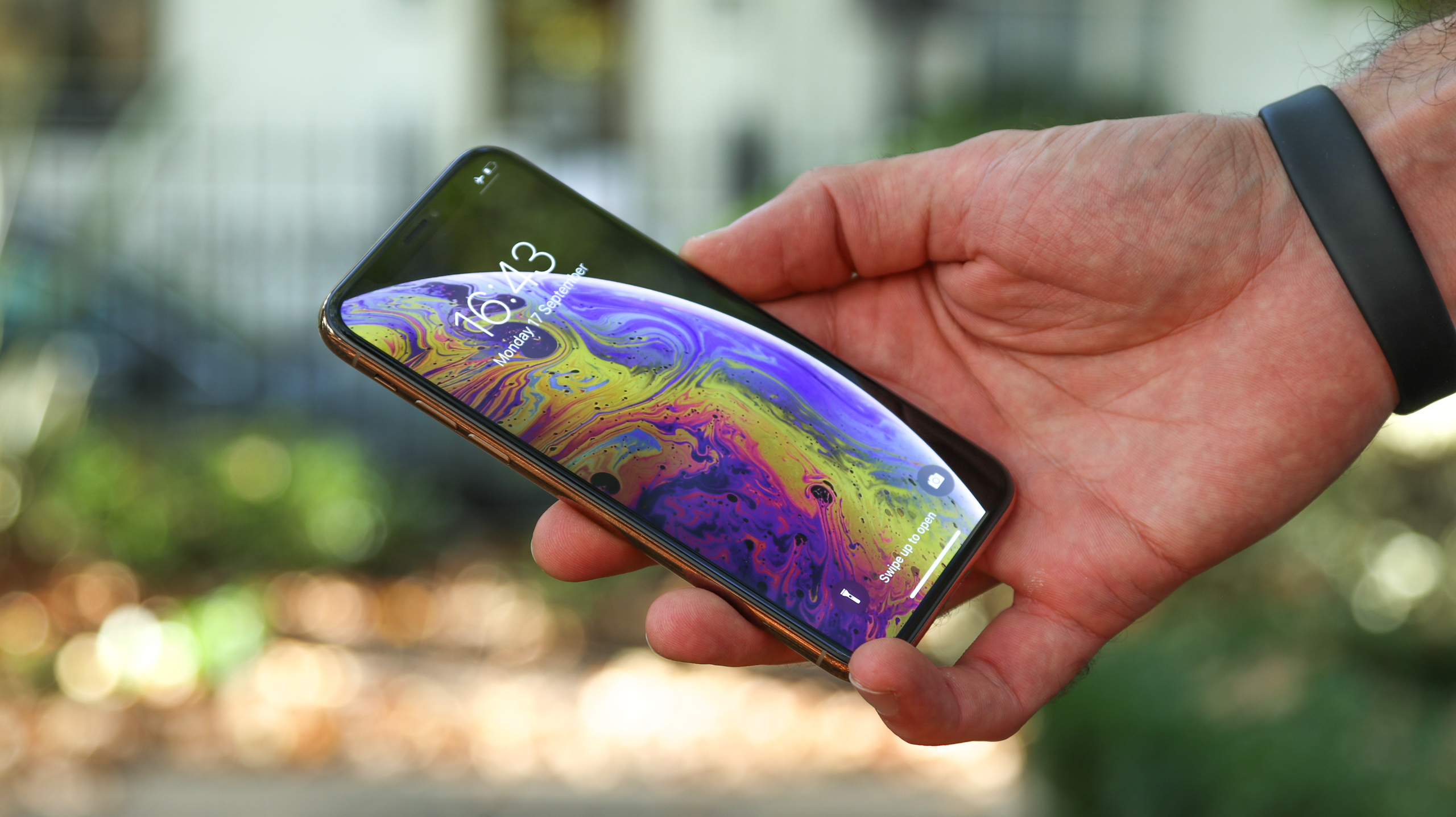
So what are you getting for that extra money - and is it worth buying? The first thing is the screen - you've got a bezel-less 5.8-inch display with a 1,125 x 2,436 resolution, and it's OLED display technology too – that's superior to the 4.7-inch 750 x 1,334 screen on the iPhone 8. You'll notice a huge difference between the two.
The other big difference to consider is how you unlock this phone - with the iPhone 8, it's Touch ID fingerprint scanning, as it has been for years. With the iPhone XS, you're unlocking with your face, using the nattily-named Face ID.
Touch ID is familiar and fast, while Face ID feels futuristic and recognize faces fast enough – but it's not going to be for everyone doesn't adjust well to drastic change. For those people, the iPhone 8 is going to be far more appealing.
The notch at the top of the iPhone XS contains a camera that allows for Animoji and MeMoji, where emoji can be animated by mapping your face - this feature is locked to the iPhone X, XS, XS Max and XR, and the TrueDepth front camera, so not possible to do on the iPhone 8.
The iPhone XS has dual cameras where the iPhone 8 has a single sensor, which allows for background de-focus and a more comprehensive photographic experience - although this is also possible on the iPhone 8 Plus.
In short: the iPhone 8 is the safe, cheaper option. It does the iPhone things you'd want, and is a solid package you'll recognize all the way back to the iPhone 6.
iPhone 8 price and availability
- iPhone 8 price (64GB): $449 (£479, AU$779)
- iPhone 8 price (128GB): $499 (£529, AU$859)
- Launch price (64GB): $699 (£699, AU$1,079)
- Launch price (256GB): $849 (£849, AU$1,329)
- iPhone 8 release date: September 22, 2017
The iPhone 8 set a new bar in terms of cost for Apple's most mainstream handset, as it upped its launch price tag once again.
While the iPhone 8 price at launch was $699 (£699, AU$1,079) for 64GB of storage and $849 (£849, AU$1,329) for the larger 256GB storage option, it has since dropped.
The iPhone 8 price now starts at $449 (£479, AU$779) for the 64GB model, and rises to $499 (£529, $829) for the 128GB variant (somewhere along the way, Apple lowered the max storage down from 256GB). For the best UK contracts, check out our iPhone 8 deals page.
Even though Apple has launched three new generations of iPhones since the iPhone 8's arrival, the handset is still widely available from Apple itself and most major phone retailers.
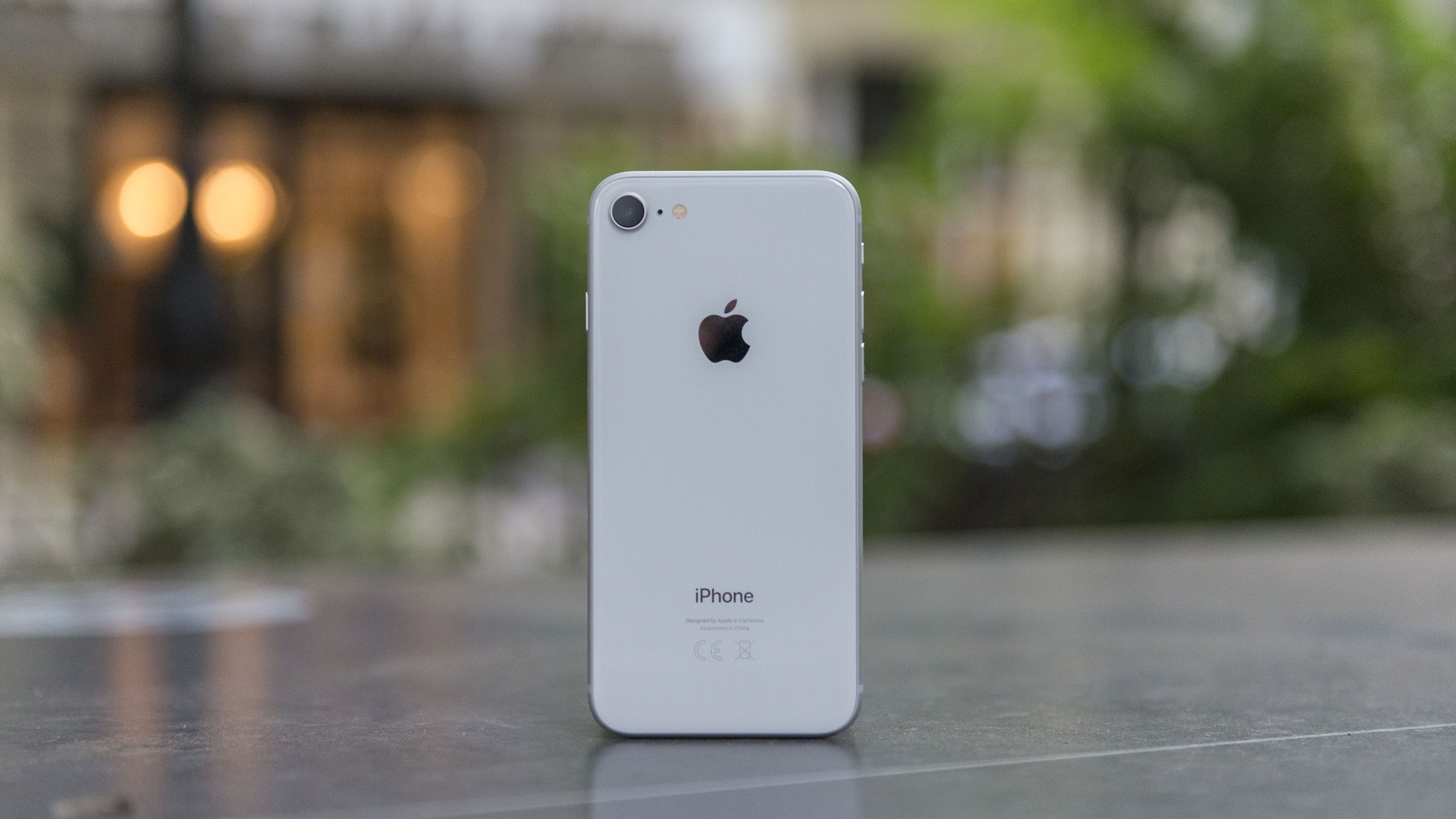
Design
- Glass rear looks and feels great, and enables wireless charging
- Front still bezel-heavy and almost identical to past three generations
The iPhone 8 marked the most radical change in iPhone design for three years – but don’t get too excited.
One of the big upgrades Apple has given its new iPhone, and the focus of the design, is the glass rear – it’s an upgrade over the aluminium body used since the iPhone 5, and its inclusion means a brand-new feature in the shape of wireless charging.
However, in terms of size, shape and look the iPhone 8 uses the same form factor as the iPhone 7, 6S and 6, and from the front it’s almost impossible to differentiate between the four generations of handsets.
The iPhone 8 is a fraction of a millimeter thicker (7.3mm vs 7.1mm), wider (67.3mm vs 67.1mm) and taller (138.4mm vs 138.3mm) than the iPhone 7, but you won’t notice. The point we’re making is that it’s similar... very, very similar.
It’s heavier too, an extra 10g over the iPhone 7, which may be a little more noticeable – but it’s not overbearing, and we were still able to comfortably hold the phone in our palm.
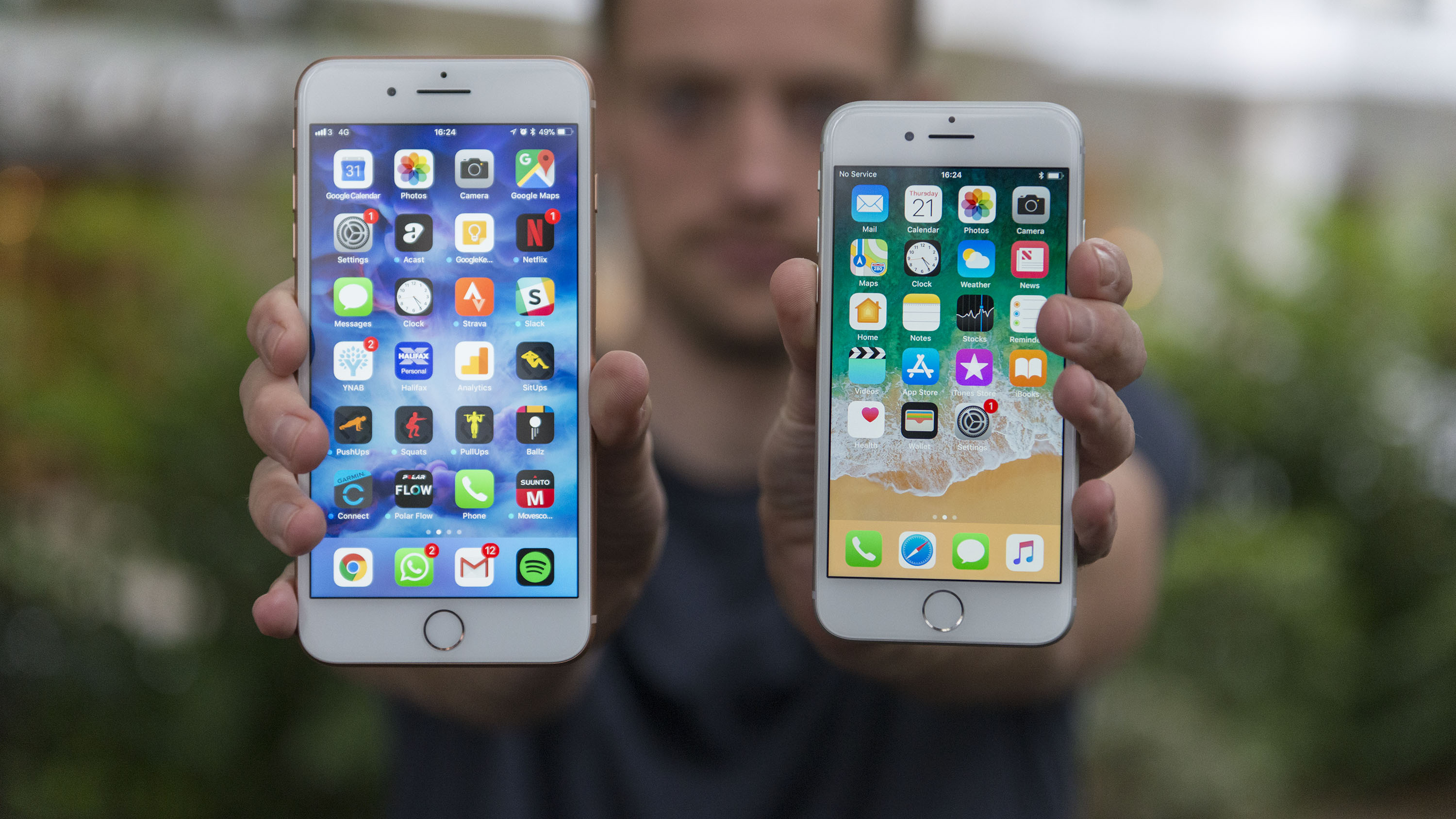
The ‘if it ain’t broke, don’t fix it’ argument can be tossed around here, and Apple certainly hasn’t had any trouble shifting large quantities of its smartphone in recent years; but in a year when Samsung and LG dramatically slashed the bezels to give us striking, futuristic designs, the iPhone 8 falls flat.
It’s not like Apple has missed this trend – the bezeless iPhone X is testament to the fact that it hasn’t – but it means the iPhone 8 and iPhone 8 Plus look ever-more dated against the competition, which now includes a rival in their own camp.
There’s still a camera bump too – this is easily remedied with a case, but for those wanting to show off the new glossy rear of the phone it increases the chance of damage when you place it on a flat surface.
The power/lock key is still easy to hit on the right side of the handset, as is the centralized home button with Touch ID fingerprint scanner located in the bezel below the 4.7-inch display. The mute switch and volume keys reside on the left of the phone, and are again well placed for easy manipulation.
It all works, the design is functional, and it’s not a bad-looking handset – but glance at that price tag and it’s hard not to feel a little short-changed on initial inspection.
A final word on the glass rear too – we prefer the way it looks and feels versus the metal body of the iPhone 7 and co., but it also means it’s even more slippery.
If you’re someone who’s liable to drop their smartphone, the iPhone 8 comes with a high risk warning, so invest in a bumper, as there’s glass to be smashed on both sides now.
Apple says the glass is super-tough, but we’ve found that it does scratch – and if you opt for the Space Grey color it’s also quite the fingerprint magnet. The silver model we reviewed was more forgiving though, which meant less time cleaning it with our shirt sleeve. Apple also offers a striking gold color option and, now, the Product Red iPhone 8 if you held out for the special edition hue.
Display
- 4.7-inch Retina HD display, same as the iPhone 7
- Apple’s True Tone tech improves colors and contrast
On paper there’s nothing between the iPhone 8 display and the screen on the phone it’s replacing. Both it and the iPhone 7 boast a 4.7-inch IPS display with a 750 x 1334 resolution, giving a 326ppi pixel density.
In fact, it’s the same size and resolution as the iPhone 6, which was launched back in 2014.
While on paper this may seem like the same old story of Apple refusing to be pushed on upping specification, it hasn’t left the display alone completely, adding True Tone display technology to the panel.
What this does is monitor the ambient light around the handset, and calibrate the screen to best suit the lighting conditions you’re in. It results in stronger colors and improved contrast, which does make the display look better than iPhone screens that came before it.
Place True Tone and non-True Tone iPhones side by side and you can see some improvement, but the iPhone 8’s display still doesn’t have quite the same colorful punch, or clarity, as the QHD+ AMOLED display on the Galaxy S8.
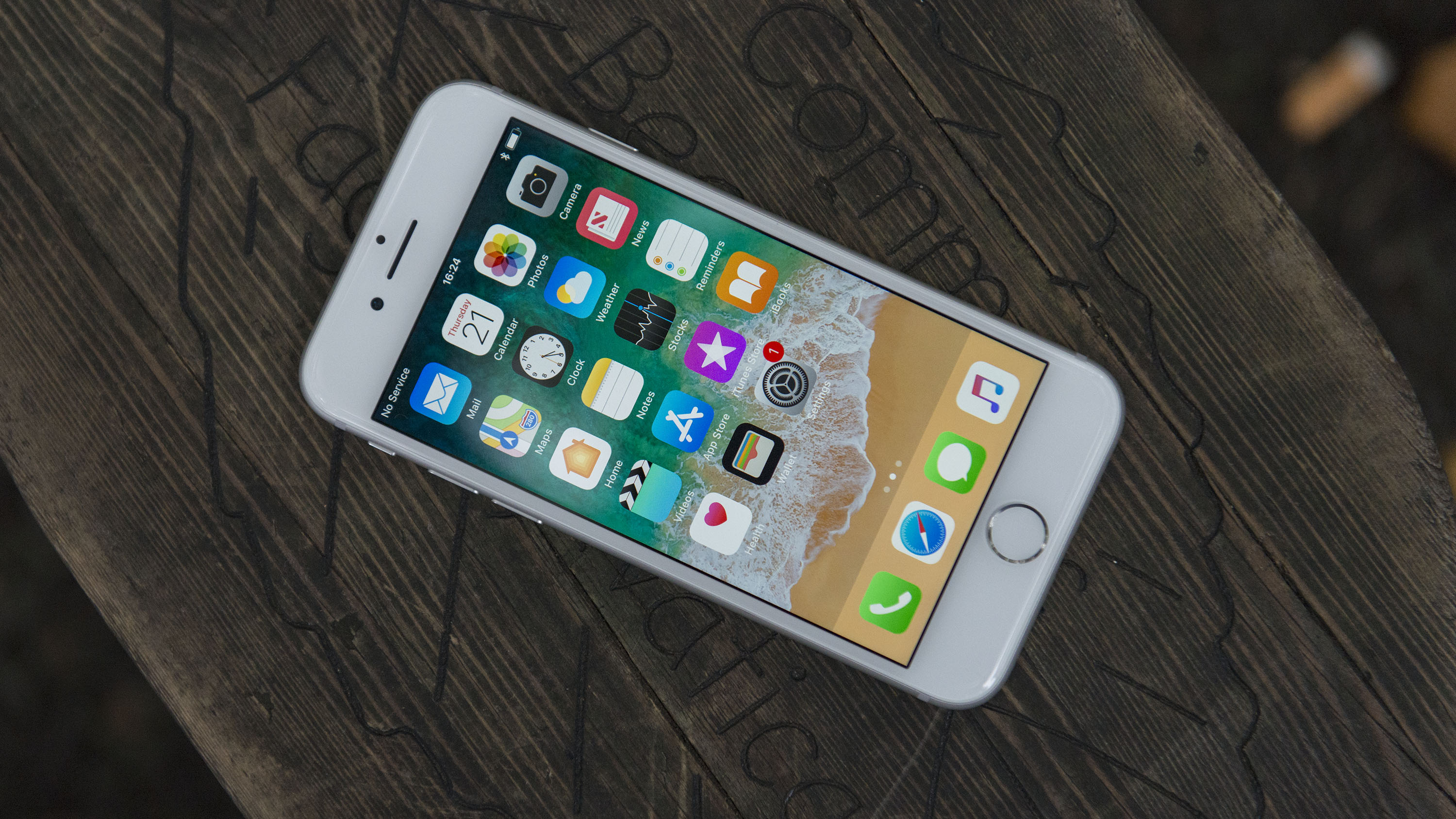
The color reproduction is improved as well, with Apple focusing on what actually makes the screen look good rather than pushing the pixels for the sake of the spec sheet... but a boost to Full HD would have made an actual difference to the quality and clarity.
Games and videos look bright and vivid though, and the screen itself is responsive, giving a solid overall experience. It’s hard to knock the screen on its own merits, as it’s only when you put it alongside rivals that it lacks the same clarity.
The fact that the screen is smaller than a lot of flagship rivals also means it’s easier to hold and use one-handed, and we were able to stretch our thumb comfortably to most areas of the screen, which isn’t as easy on the larger iPhone 8 Plus.

TechRadar's former Global Managing Editor, John has been a technology journalist for more than a decade, and over the years has built up a vast knowledge of the tech industry. He’s interviewed CEOs from some of the world’s biggest tech firms, visited their HQs, and appeared on live TV and radio, including Sky News, BBC News, BBC World News, Al Jazeera, LBC, and BBC Radio 4.
